
Nekhbet (Nekhebet, Nechbet) was the patron of Upper Egypt, appearing as one of the “Two ladies” in the Nebty name of the pharaoh (with her counterpart Wadjet). She was often called “Hedjet” (White Crown) in reference to the crown of Upper Egypt and regularly appears as a heraldic device representing Upper Egypt. She was also a protector of royal children and, in later periods, of all young children and expectant mothers.
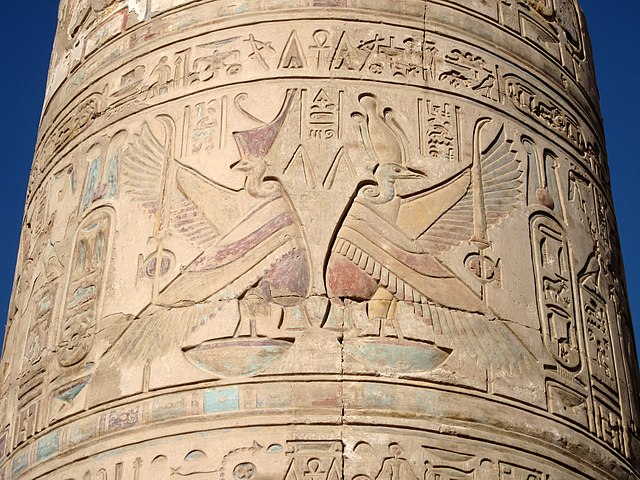
There is evidence that Nekhbet was already popular in Predynastic Egypt but was specifically associated with the town of Nekheb (her name actually means “she of Nekheb”). However, by the Early Dynastic Period Nekheb and Nekhen (cult center of Horus the Elder) had merged and she and Wadjet were combined to form the Nebty name of the pharaoh; her position as a representative of Upper Egypt was fully established.
References in the Pyramid Texts (from the Fifth Dynasty) confirm that Nekhbet was also considered to be a creator goddess with the epithet “Father of Fathers, Mother of Mothers, who has existed from the beginning, and is Creator of this World”. She was represented on the king’s Nemes headdress as a vulture or a snake and from the Fourth Dynasty vulture headdress for great royal wife.
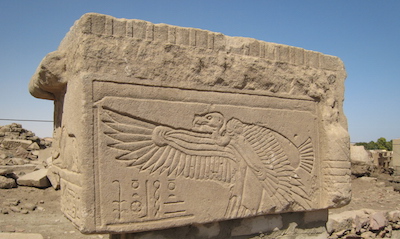
Nekhbet was known as “pr wr” (Lady of the Great House – the Upper Egyptian “state” temple). During the Eighteenth Dynasty she and Wadjet offered their protection to all of the women of the royal family. This was indicated by the addition of two uraei (royal serpents) to their headdress.
Unlike Heqet and Taweret, she was initially only thought to protect royal mothers and children. Nekhbet was occasionally depicted as the divine mother or wet-nurse of the pharaoh and often appeared in vulture form hovering above the king holding the “shen” (representing eternity) and the royal flail (representing pharaonic authority). However, during the New Kingdom she seems to have extended her protection beyond the royal family to the common people.
Nekhbet was thought to be the wife of Hapi, in his role as a patron of Upper Egypt, but was also associated with Horus (who was also associated with Upper Egypt). Because she often took the form of a griffon vulture and was associated with childbirth, she was closely associated with the goddess Mut. She was also associated with the bovine goddess Hathor and given the epithet “Great White Cow of Nekhb”.
Like most Egyptian deities, Nekhbet also had a darker side. She was associated with the “Eye of Ra”, along with a great number of goddesses, and was often depicted hovering above the pharaoh in battle offering him protection and threatening his enemies.
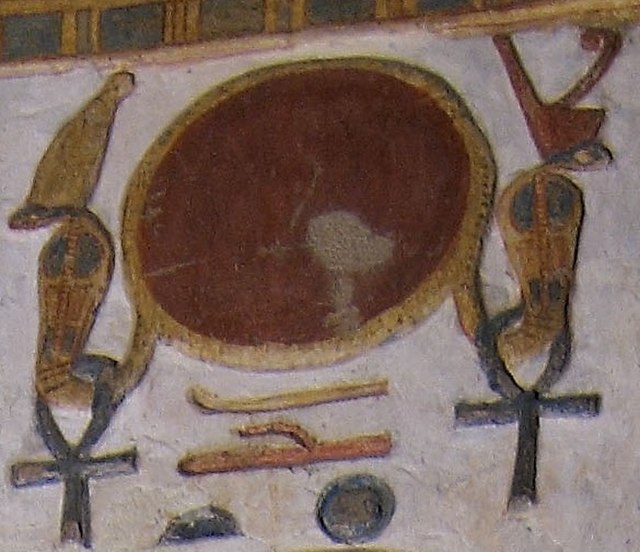
On the Palermo Stone Thutmose IV confirms that his protector is “Nekbet, the White, of Nekheb. She fastened the adornments of my majesty, her two hands were behind (me) she bound the Nine Bows (enemies of Egypt) together for me”. She also took on this martial role in her dealings with other gods. For example, in one of the myths regarding the conflict between Set and Horus, Nekhbet and Wadjet (in the form of winged snakes) flank Horus (in the form of a winged sun disc) as he pursues Set and his fleeing followers.
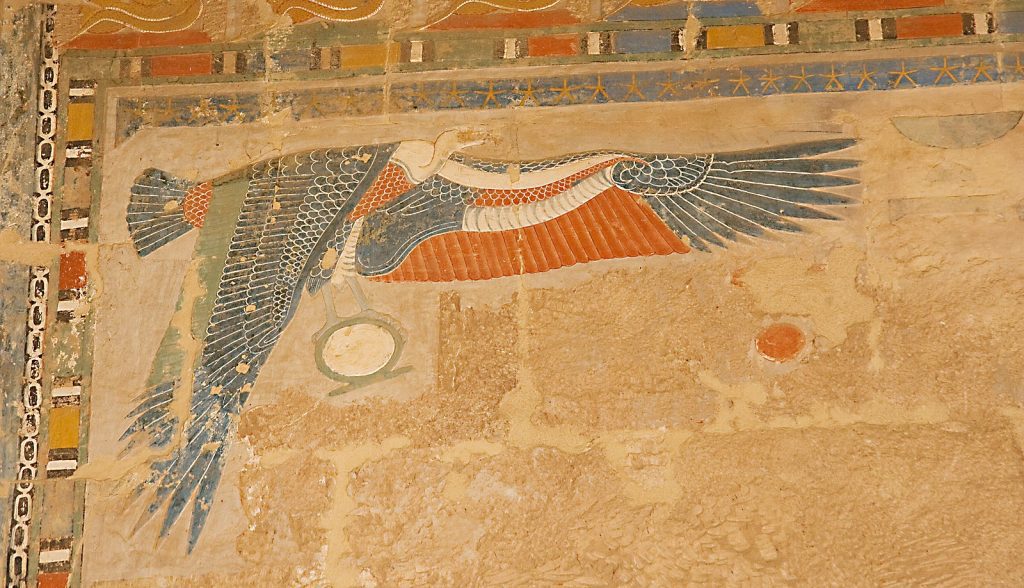
This association with the “Eye of Ra” clearly gives her a strong solar connection, but she was also described as the “healthy eye of Horus” (the moon) and named as the “Mistress of the heavens”.
Nekhbet was generally depicted as a woman wearing the crown of Upper Egypt or the vulture headdress. However, she was also depicted as a woman with the head of a vulture, or as a snake or vulture with the White Crown on her head. When she takes the form of a vulture, she often spreads her wings in protection and bears the “shen” and (sometimes) the feather of ma’at in her talons.
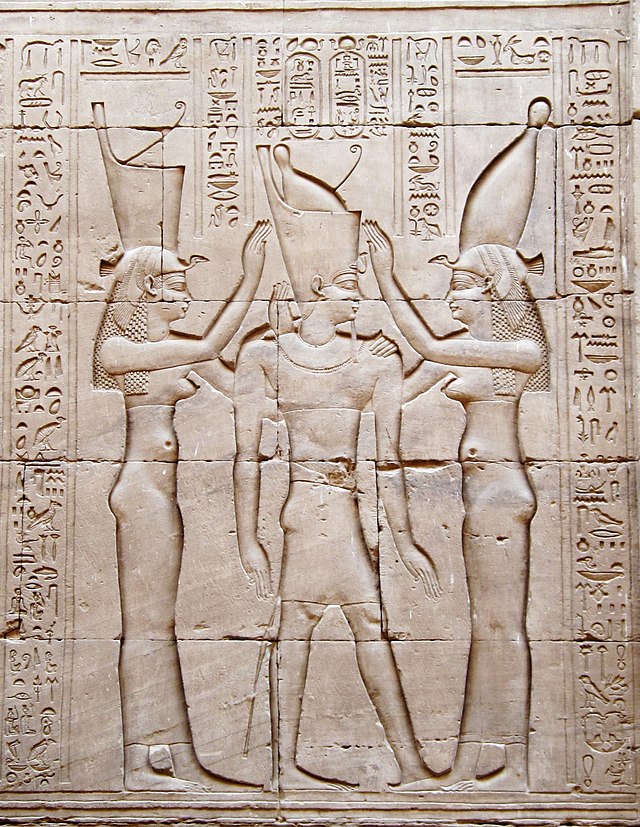
She was often shown with Wadjet and when in human form she and Wadjet can only be distinguished by their crowns. Occasionally, Nekhbet was depicted suckling the pharaoh or as a cow (as an aspect of Hathor).
A temple was built in her honour at Nekhb which included a birth house, a series of small temples, a sacred lake and some early cemeteries. It is thought that it was first established during the Early Period, but major building projects were undertaken during the Eighteenth Dynasty and the majority of the remains belong to pharaohs of the Twenty-ninth and Thirtieth Dynasties.
Bibliography
- Bard, Kathryn (2008) An introduction to the Archaeology of Ancient Egypt
- Kemp, Barry J (1991) Ancient Egypt: Anatomy of a Civilisation
- Pinch, Geraldine (2002) Handbook Egyptian Mythology
- Redford Donald B (2002) Ancient Gods Speak
- Watterson, Barbara (1996) Gods of Ancient Egypt
- Wilkinson, Richard H. (2003) The Complete Gods and Goddesses of Ancient Egypt
- Wilkinson, Richard H. (2000) The Complete Temples of Ancient Egypt
- Wilkinson,Toby (1999) Early Dynastic Egypt/li>
- Ziegler, Christine Editor (2008) Queens of Egypt: From Hetepheres to Cleopatra
Copyright J Hill 2018